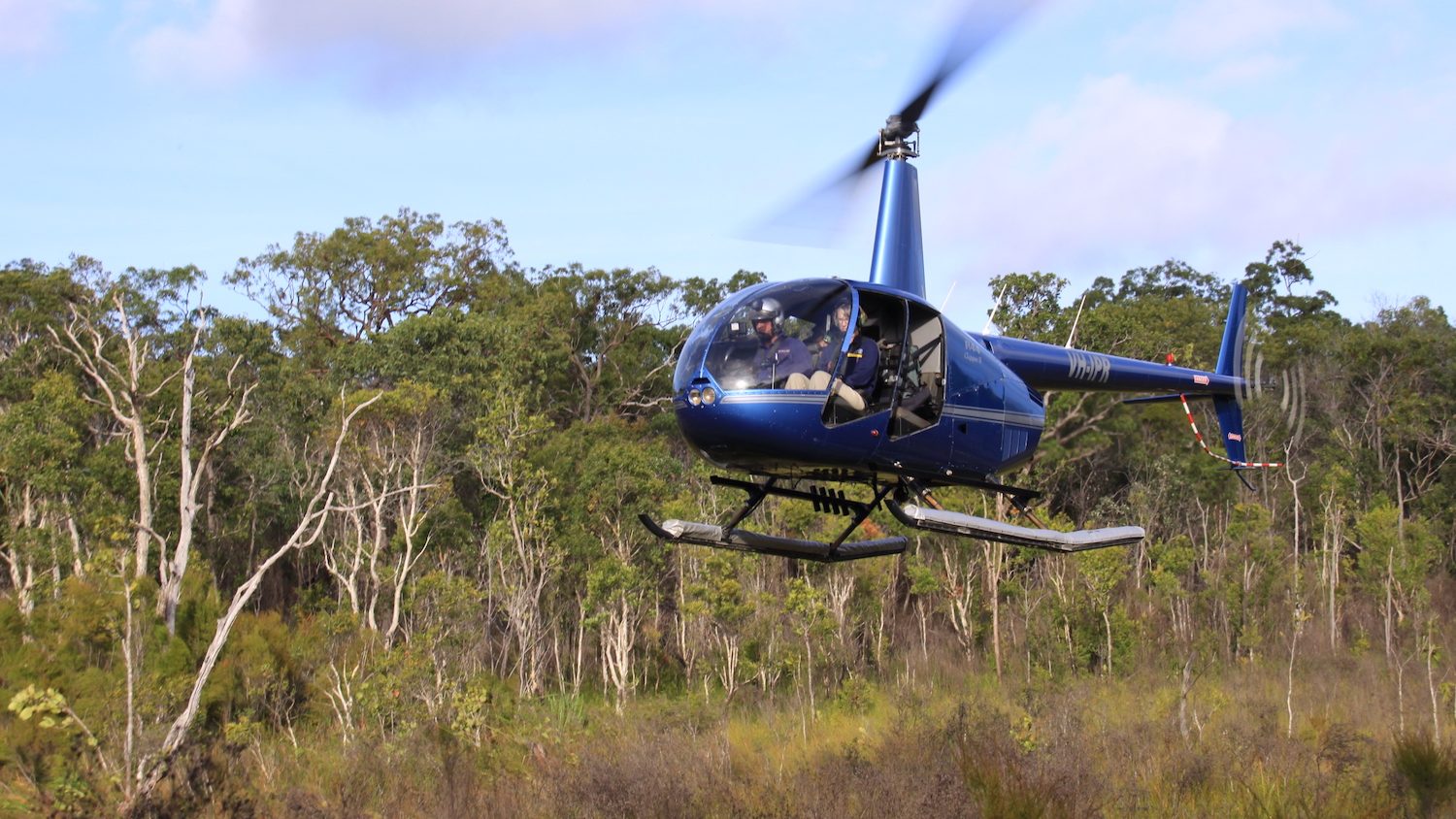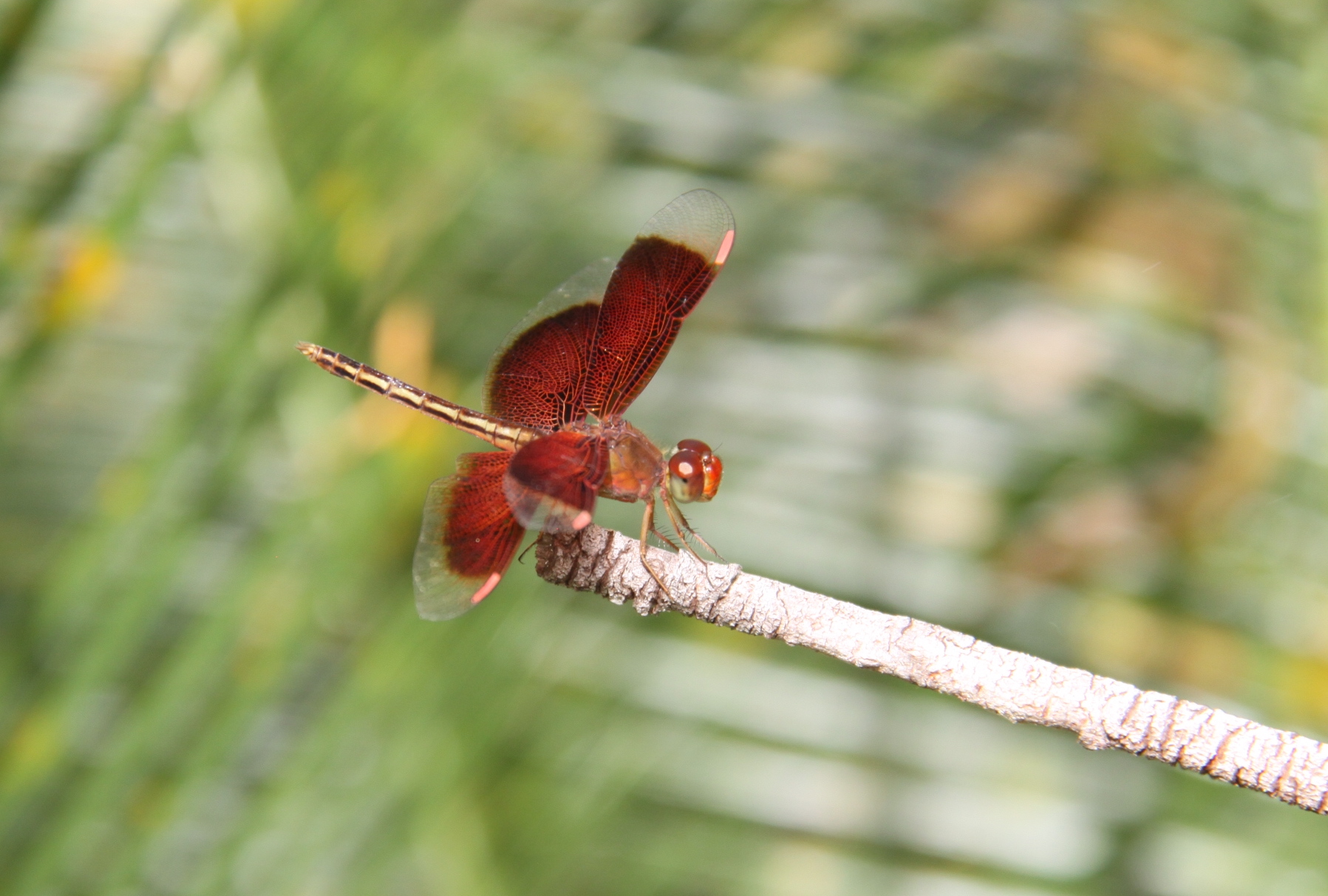Cape York, on the northern tip of Australia, is known for big adventures: 4-wheel driving through flooded creeks, crocodiles, tall termite mounds, and remote terrain where it’s easy to get lost.
In May, I joined a group of scientists and traditional owners from the Wuthathi, Northern Kaanju and Atambaya clans to participate in the Queensland government’s biodiversity survey of Bramwell-Richardson Station. Our aim was to map regional ecosystems, rediscover plants and animals in the region, and to spend time reconnecting with country and each other.
Bramwell-Richardson was a cattle station acquired for protection by the Queensland government in 2022, with assistance from The Nature Conservancy with generous support from the Wyss Foundation and Haley Mellin’s Art into Acres initiative through Re:wild. Until now, traditional owners and scientists have been kept out, unable to protect and maintain the biodiversity and cultural values of this amazing place.
Here’s what a typical day (and night) is like for a field scientist on a biodiversity survey in Cape York.

Sunrise on the Cape
We’re up early for a big (but quick) full Aussie breakfast of eggs, bacon, tomatoes, mushrooms, toast and tea or coffee. We’ve got to be packed for a full day out: first aid kit, radio, sat phone, water, sandwiches, fruit and snacks. Most of the property is still inaccessible by vehicle due to a late wet season, so we have to take a chopper to get around. The regional ecologists have chosen a few locations to survey based on mapping taken from aerial imagery over 30 years old. We need to ground-truth the ecological boundaries and see what plants and animals we can find.
But first things first, we have to find somewhere to land the chopper. We fly out around a distant escarpment, nearly give up, and are pretty excited to finally find a swamp with low shrubs and that isn’t too wet. Then again, it might have crocodiles. We’ll just have to find out, won’t we?

Early Morning – Surveying Wetlands & Escarpments
Chris Burwell is the Senior Curator of Insects at the Queensland Museum. He’s searching the wetland for dragonflies, while Kelee Roberts, a northern Kaanju man, and I keep an eye out for crocodiles. With one eye on the water, Roberts points out pitcher plants that grow in these low-nutrient swamps.

Next, we hike to the rocky escarpment we saw from the helicopter. There is no track (and no crocs), we just have to head towards it. The GPS helps, but when the melaleuca paperbarks in the swamp get too thick we have to take a detour through the woodland and up the hill, mapping the boundary between the different ecosystems.
This is my first trip to Cape York. As we walk, I recognize plant types but it’s good to be following in the footsteps of experts to learn the species names of these beautiful plants – swamp foxgloves popping up through the grasses, a wombat berry vine climbing a tree, the large white native Hibiscus, and the banksia flowers feeding the honeyeaters.
While I’m noticing the flowers, termite mounds and stinging green ant nests, the botanists are focused on measuring the DBH (diameter at breast height) of trees and estimating the canopy cover. In some places the regional ecosystems align perfectly, in other places the old maps are out of date. The data we’re gathering here will be vital information to inform planning and management for this new national park.
Fire is a vital part of Australian ecosystems, Aboriginal people were experts at utilising it to care for country. But with the loss of proper fire management and the introduction of weeds, feral animals and contemporary activities such as tourism and cattle grazing, good planning is needed to connect current and traditional management activities.

Into the Rainforest
Next we head to two rainforest patches. The first is an evergreen notophyll vine forest with a unique mix of rainforest and non-rainforest species. While it shows signs of historical disturbance, such as coppiced tree bases and old fire scars, there appears to be some expansion of the rainforest area compared to the historical maps.
Excitingly, through the expert identification skills of botanist David Fell, we expand the distribution of two potentially endangered species: Caesaria sp. aka possum scrub and Aglaia felli. We also see a flowering Cooktown orchid high up in the treetops, a beautiful pinky purple flower threatened by changed fire regimes and increasing incidence of cyclones.



Our second patch of rainforest is called a gallery forest, restricted to the banks of one of the many creeks that run across Bramwell Richardson. While others searched for dragonflies, Jordan Solomon from the Wuthathi Rangers and I were tasked with finding a cuscus, a strange sloth-like possum, that likes to rest out in the open on a branch.
The forest is truly beautiful: it is a perfect maze of narrow creeklines just wide enough to jump across, with orchids and pitcher plants hanging from the trees, and huge fan palms decorating the creek edge. Sadly, we can’t find a cuscus, and before too long it’s time for lunch. Solomon cuts a couple of fans from the palms to make a dry seat. We eat our sandwiches and chocolate cake before taking a short siesta, dreaming of cuscus and dragonflies.



Snakes, Lizards & Butterflies
After lunch, we hike up to the top of an escarpment and another regional ecosystem dominated by thick shrubby Astromyrtus heath. I keep an eye on the herpetologists following the cliff line. Steve Wilson and Andrew Amey are looking for reptiles, carefully checking under sandstone slabs and through the leaf litter.
A Bright Future for Indigenous-led Conservation
Australia’s Cape York is one of the most biodiverse regions in the world.
Before long they find a Cape Zig Zag gecko (Amalosia capensis), but the little critter is too fast for them and it disappears into the leaf litter. That record would have made the trip. Further on, something black whips under some grass a few feet in front of me, I yell “Snake!” but the herpetologists have moved on already, finding a lot more without me crashing through the shrubs behind them.
We continue on to search for butterflies. Males of many butterfly species can be found on hilltops, particularly on warmer afternoons. They dash around looking for a good spot, often engaging in aerial dog fights over the best territory. When the interloper finally leaves, the butterfly waits, victorious, for a female.
Butterflies can be a good indicator of habitat condition, connectivity, and climate change. Ed Petrie, a retired book publisher and volunteer butterfly expert, spends his time following butterflies to mark their presence and connect them to larvae and foodplants. His best advice for finding butterflies: wear a fluoro shirt, so when you inevitably get lost, the emergency helicopter can find you easier!


Back to Camp for More Botanizing
We have afternoon tea as we wait for the helicopter. We’re nervous; the weather is turning, a light drizzle and a bit of wind starts to pick up. The chopper needs to make multiple trips to get all of us (our gear and plant samples) back to camp, and there’s a chance some people might be stuck camping for the night. Not this time, the weather holds off and we all make the flight.
We’re back at camp, but the work’s not done. A group of botanists from the Queensland Herbarium and Queensland Government spend a humid tropical afternoon with no fan or air conditioning sorting all the plant specimens, identifying them, noting their features and location, and pressing them for submission into the herbarium.
Meanwhile, I head out to a low open paperbark (Melaleuca viridiflora) woodland along the main road with botanist, Mike Mathieson, Wuthathi rangers, Hilton Nobel, Paul Sexton and Jordan Solomon, and Cape York regional project planner Simon Thompson. To the casual 4WD tourist driving past at speed, the big termite mounds, paperbark trees and grass, all become a blur. But up close, you can experience just how beautiful it is.
With the help of Mike’s expert eye, suddenly all these tiny little plants start popping out of the grassland. Purple fringe lilies, white trigger plants, and the pretty little pink flowers of the Drosera, a carnivorous plant that catches careless insects using tiny little sticky droplets along its leaves.

Dinner, Specimen Sorting, & Spotlighting
We head back to camp to sort all the specimens collected during the day and start planning tomorrow over dinner. Maps are pulled out, logistics arranged, and chopper flights are booked.
After dinner, we hear the low hum of a generator starting up. Behind the camp, Wesley Jenkinson is standing in front of a powerful light and a white cloth, where hundreds of moths gather: Brown, white, green, yellow and black-striped.

Many of these moths have never been collected or identified by scientists, certainly not on Bramwell Richardson. By the end of the trip Jenkinson will collect around 190 different moth species. This is just a small sample of the species likely to occur in the area.
I leave the moths and catch the spotlighting crew before they head off into the night. Regional ecologist John Augusteyn drives at a very slow speed, monitoring the road while I stand on the tray of the ute pointing the spotlight at trees and shrubs. Every now and then we hear the yappy barking of what is probably a squirrel glider. We stop the ute, listen, and play a call through the phone. It yaps back. Quick, which direction? John races off into the trees with a head torch. A sighting would give us a confirmation of its presence. But it stops yapping, so we keep driving.
We have much more luck with reptiles and amphibians. A couple of different geckos, a snake or two and lots of frogs, coming out to enjoy the evening drizzle. I’ve got five frogs on the list for the night, but more will be recorded later: marbled frog, (Limnodynastes convexiusculus), pallid rocket frog (Litoria pallida), rocket frog (Litoria nasuta), Northern dwarf green tree frog (Litoria bicolor), and the wood frog (Papurana daemelii).
And with that, it’s time to get to bed.

The Future of for Richardson-Bramwell
After a wonderful week it’s time to head home. We ticked off the Palm Cockatoo on the very last day, and while I didn’t see a cuscus or a crocodile, this week has been about so much more than spotting wildlife. It’s about understanding the conservation values and benefits for people. It’s about recognizing the diversity of the little things — the butterflies, the moths, the tiny flowers — that together make up the different ecosystems and highlight why Bramwell Richardson is such an important place to protect.
It’s also about the people: the expert biodiversity and cultural knowledge holders and their willingness to share information and stories. I learnt so much from them, and getting back onto country brings to life the paperwork, helping me to remember what my work at The Nature Conservancy is all about.

The Traditional Owners I met were unable to spend time on Bramwell-Richardson while it was a cattle station, and their happiness to be able to reconnect with country was as great as their sadness about what they’ve missed out on. Their ideas for the future are bold, exciting, and full of challenges.
There are still a few steps to go before Bramwell-Richardson becomes a formal joint-managed national park. The results of the biodiversity survey will help ensure its considerable natural, cultural, and economic values are protected as everyone reengages with country and plans the next step for this remarkable place. I can’t wait to follow the progress over the next few years.








Leave a Comment